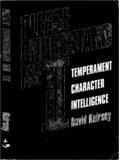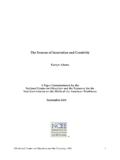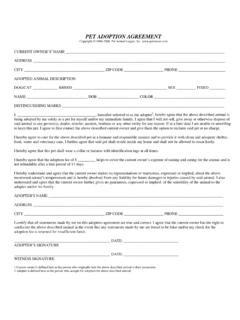Transcription of Fundamentals of Piano Practice
1 Fundamentals of Piano Practice by Chuan C. Chang To my wife Merry and our daughters Eileen and Sue-Lynn The material of Chapter One originated from my notes on how the late Mlle. Yvonne Combe taught our daughters. Mlle. Combe was Debussy's disciple and helped transcribe his new compositions as he played them out on the Piano . She performed that incredible Second Piano Concerto by Saint Saens with the composer conducting. Every audience that attended recitals by her students, especially when they played Debussy and Saint Saens, was mesmerized. This book had to be written: without it, her passing would have deprived this world of a priceless art. Chapter One: Piano TECHNIQUE Chapter Two: TUNING YOUR Piano References March 6, 2009 Copyright 2009, copy permitted if author s name, Chuan C. Chang, and this copyright statement are included. ISBN: 1-4196-7859-0 ISBN-13: 978-419678592 Library of Congress Control Number: 2007907498 Order this book at or This entire book can be downloaded free at: 1 Table of Contents Testimonials.
2 6 Abbreviations and Frequently Used 14 16 CHAPTER ONE: Piano TECHNIQUE .. 24 I. INTRODUCTION .. 24 1. Objective .. 24 2. What is Piano Technique?.. 25 3. Technique, Music, Mental Play .. 26 4. Basic Approach, Interpretation, Musical Training, Absolute Pitch .. 26 II. BASIC PROCEDURES FOR Piano Practice .. 28 1. The Practice Routine .. 28 2. Finger 29 3. Bench Height and Distance from Piano ..30 4. Starting a Piece: Listening and Analysis (Fur Elise).. 30 5. Practice the Difficult Sections First .. 31 6. Shortening Difficult Passages: Segmental (Bar-by-Bar) 31 7. Hands Separate Practice : Acquiring 31 8. Continuity Rule .. 32 9. Chord Attack .. 33 10. Gravity Drop, Chord Practice , and 33 11. Parallel Sets .. 35 12. Learning, Memorizing, and Mental 36 13. Velocity, Choice of Practice Speed ..38 14. How to 39 15. Post Practice Improvement (PPI) ..41 16. Dangers of Slow Play - Pitfalls of the Intuitive Method .. 42 17. Importance of Slow Play.
3 43 18. Fingering .. 44 19. Accurate Tempo and the Metronome .. 45 20. Weak Left Hand; Using One Hand to Teach the 46 21. Building Endurance, Breathing ..47 22. Bad Habits: A Pianist's Worst 49 23. Damper Pedal .. 51 24. Soft Pedal: Hammer Voicing, Physics of the Piano 52 25. Hands Together and Mental Play .. 55 Beehoven s Moonlight, 1st Movement, Op. 27, No. 2 .. 56 Mozart s Rondo Alla Turca, from Sonata K300 (K331).. 59 Chopin's Fantaisie-Impromptu, Op. 66, Fast Play Degradation (FPD).. 61 26. Summary .. 64 III. SELECTED TOPICS IN Piano Practice .. 64 1. Tone, Rhythm, Legato, 64 a. What is "Good Tone"? The Basic Keystroke.. 64 Tone: Single versus Multiple Notes, Pianissimo, Fortissimo.. 65 b. What is Rhythm? (Beethoven s Tempest, Op. 31, #2, Appassionata, Op. 57) .. 69 c. Legato, Staccato .. 71 2. Cycling (Chopin's Fantaisie Impromptu).
4 72 3. Trills & Tremolos .. 76 a. Trills .. 76 b. Tremolos (Beethoven's Pathetique, 1st Movement).. 77 2 4. Hand, Finger, Body Motions for 79 a. Hand Motions (Pronation, Supination, Thrust, Pull, Claw, Throw, Flick, Wrist) .. 79 b. Playing with Flat Fingers (FFP, Spider, Pyramid Positions) .. 80 c. Body Motions .. 88 5. Playing Fast: Scales, Arpeggios, and Chromatic a. Scales: Thumb Under, Thumb Over (TU, TO).. 89 b. The TO Motion, Explanation and Video .. 91 c. Practicing TO: Speed, Glissando Motion .. 92 d. Scales: Origin, Nomenclature and Fingerings .. 96 e. Arpeggios (Chopin s Fantaisie Impromptu, Cartwheel Motion, Finger Splits) .. 98 f. Thrust and Pull, Beethoven's Moonlight, 3rd Movement .. 100 g. Thumb: the Most Versatile 103 h. Fast Chromatic 103 6. Memorizing .. 104 a. Why Memorize? .. 104 b. Who can, What to, and When to, Memorize.. 106 c. Memorizing and Maintenance .. 106 d. Hand Memory .. 107 e. Starting the Memorizing Process .. 107 f.
5 Reinforcing the 108 g. Practicing Cold .. 109 h. Slow Play .. 109 i. Mental Timing .. 110 j. Establishing Permanent Memory, Mental Play .. 110 Music memory.. 111 Photographic 111 Keyboard memory and mental 112 Theoretical 114 k. 114 l. Sight Readers versus 115 Bach's 2-part Inventions: #1, #8, and #13.. 116 Quiet hands.. 120 Sinfonia # 121 m. Human Memory Function; Music = Memory Algorithm .. 122 n. How to Become a Good Memorizer .. 124 o. 125 7. 126 a. Introduction: Intrinsic, Limbering, and Conditioning Exercises .. 126 Fast vs. Slow Muscles .. 127 b. Parallel Set Exercises for Intrinsic Technical 128 c. How To Use The Parallel Set Exercises (Beethoven s Appassionata, 3rd Movement) .. 134 d. Scales, Arpeggios, Finger Independence and Finger Lifting Exercises .. 135 e. Playing (Wide) Chords, Finger/Palm Spreading Exercises .. 136 f. Practicing Jumps.
6 138 g. Stretching and Other 139 h. Problems with Hanon Exercises .. 139 i. Practicing for Speed .. 142 Speed Stroke, 142 Other Speed Methods .. 143 Speed Walls .. 143 8. Outlining (Beethoven's Sonata #1) .. 145 9. Polishing a Piece - Eliminating 146 310. Cold Hands, Slippery (Dry/Sweaty) Fingers, Illness, Hand Injury (Carpal Tunnel), Ear Damage (Tinnitus) .. 147 11. Sight 153 12. Learning Relative Pitch and Absolute Pitch (Sight Singing, Composing) .. 155 13. Video Recording and Audio Recording Your Own 159 14. Preparing for Performances and Recitals .. 160 a. Benefits and Pitfalls of Performances/Recitals.. 160 b. Basics of Flawless Performances.. 161 c. Practicing for Performances.. 161 d. Practicing Musically.. 162 e. Casual Performances.. 163 f. Performance Preparation Routines.. 164 g. During the Recital.. 166 h. That Unfamiliar 166 i. After the Recital.. 167 15. Origin and Control of 167 16.
7 170 a. Types of 170 b. Teaching Youngsters, Parental Involvement, Mental Play, Absolute Pitch.. 170 How to teach your child.. 172 c. Memorizing, Reading, Theory.. 174 d. Some Elements of Piano Lessons and performance skills.. 175 e. Why the Greatest Pianists Could Not Teach..178 17. Upright, Grand & Electronic Pianos; Purchasing and Care .. 179 a. Grand, Upright, or Electronic?.. 179 b. Electronic 180 c. 183 d. Grands.. 183 e. Purchasing an Acoustic Piano .. 184 f. Piano 185 18. How to Start Learning Piano : Youngest Children to Old 187 a. Do You Need a Teacher?.. 187 b. Starter Books and 188 c. Beginners: Age 0 to 65+.. 188 19. The Ideal Practice Routine (Bach s Teachings and Invention #4) .. 191 a. Learning the Rules.. 191 b. Routine for Learning a New Piece.. 191 c. Normal Practice Routines and Bach s Teachings.. 191 20. Bach: the Greatest Composer and Teacher (15 Inventions and their Parallel Sets) .. 197 21. The Psychology of Piano .
8 199 22. Summary of Method .. 201 IV. MUSIC, MATHEMATICS, AND RESEARCH .. 202 1. Can We All Be Mozarts? .. 202 2. Scientific Approach to Piano 203 a. The Scientific Method.. 203 b. Principles of Learning .. 204 3. Why Is Intuition So Often Wrong? .. 206 4. Mozart's Formula, Beethoven and Group 206 Mozart (Eine Kleine Nachtmusik, Sonata K300).. 206 Beethoven (5th Symphony, Appassionata, Waldstein) .. 209 5. Learning Rate Calculation (1000 Times Faster!) .. 212 6. Future Research 215 a. Momentum Theory of Piano Playing.. 215 b. The Physiology of Technique.. 215 c. Brain Research, Using the Subconscious.. 215 4 d. The Future of Piano ..217 . e. The Future of V. JAZZ, FAKE BOOKS, AND IMPROVISATION .. 220 CHAPTER TWO: TUNING YOUR Piano .. 222 1. Introduction .. 222 2. Chromatic Scale and 223 a. Mathematics of the Chromatic Scale and Intervals .. 223 b. Temperament, Music, and the Circle of Fifths..225 c. Pythagorean, Equal, Meantone, and Well Temperaments.
9 226 3. Tuning Tools .. 228 4. 228 5. Getting 228 a. Engaging and Manipulating the Tuning Lever.. 229 b. Setting the 230 c. Tuning 230 d. Sympathetic Vibrations.. 232 e. Making that Final Infinitesimal 232 f. Equalizing String Tension.. 233 g. Rocking It in the 233 h. Rumblings in the Bass.. 233 i. Harmonic Tuning.. 234 j. What is Stretch?.. 234 k. Precision, Precision, 234 6. Tuning Procedures and Temperament .. 235 a. Tuning the Piano to the Tuning 235 b. Kirnberger II .. 236 c. Equal Temperament .. 236 7. Making Minor Repairs (Voicing and Polishing the Capstans) .. 237 a. Hammer Voicing.. 237 b. Polishing the 239 REFERENCES .. 239 Book/Video 241 Reviewed Books: Classical Music .. 241 General Conclusions from the Reviewed Books .. 241 List of MUST READ Books & MUST VIEW 242 Reviewed Books: Jazz, Fake Books and Improvisation .. 253 Reviewed 254 Web Sites, Books, Videos .. 254 General .. 254 Sites with Free Sheet Music and Other Goodies.
10 254 Piano Instruction (Classical), Teachers, 254 Books Not Referenced Above, by title .. 255 Piano Technology, Tuning, Parts, 256 Injury from Piano 256 Jazz, Chords, Theory, Instruction (Popular Music).. 256 Sheet Music, Video, CD, Book, 257 Notes for Translators: .. 257 ABOUT THE AUTHOR.. 258 List of Tables, Equations, and Videos .. 258 Index .. 258 5 Request: to those who have found this material useful, please make an effort to let at least two people know about my web site, so that we can start a chain reaction of ever more people that will be informed of this site. I am looking for volunteers to translate this book into any language. See "Notes for Translators" on P. 257. Please email me at to discuss this matter. This book is presently being translated into German, Polish, Italian, Spanish, French, Simplified and Traditional Chinese, and Japanese. Teachers can use this book as a textbook for teaching Practice methods. It can save you a lot of time, allowing you to concentrate on teaching music.





